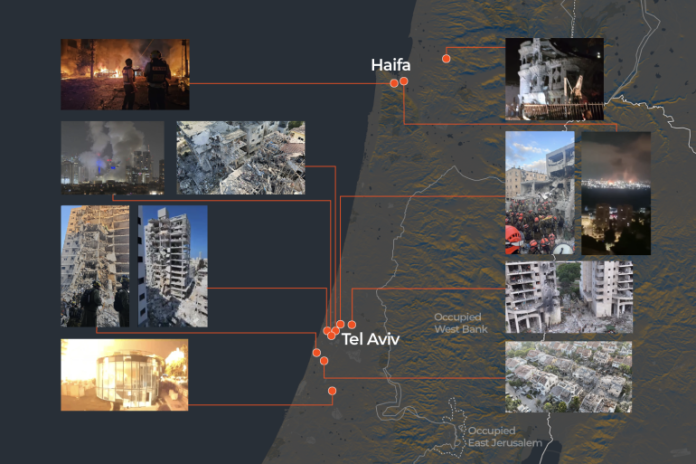– Mohammed Talha Siddi Bapa
The latest intelligence reports emerging from Washington and Tel Aviv paint a concerning picture of the current standoff between Israel and Iran. According to assessments, Israel can maintain its missile defence for 10 or 12 more days if Iran maintains a steady tempo of attacks, without resupplies from the United States – a revelation that fundamentally changes our understanding of regional military realities.
The Reality of Modern Missile Defence
This timeframe is not merely a technical limitation but a strategic weakness that shows the complexity of modern Middle Eastern conflicts. Iran’s missile collection, built over decades of sanctions and isolation, represents a serious challenge to even the most advanced defence systems. The country’s investment in missile technology, often dismissed by western analysts, appears to have created a capability that can strain Israel’s Iron Dome and other defensive systems through continuous pressure.
The 12-day assessment suggests that Iran’s strategy is not necessarily to overwhelm Israeli defences in a single massive strike, but rather to maintain a steady pace of attacks that would gradually drain defensive resources. This approach reflects a deeper understanding of modern warfare, where supplies and long-term planning often matter more than initial firepower.
Trump’s Calculated Restraint
President Trump’s recent meeting with his national security team concluded without a decision on military action against Iran, according to Wall Street Journal reporting. The fact that striking Iran was merely “one of multiple options discussed” suggests the administration recognises the complexity of the situation and the potential for escalation.
This restraint appears informed by the same intelligence assessments that revealed Israel’s defensive limitations. If Israel can only maintain its missile defence for 12 days independently, any American military action that provokes sustained Iranian retaliation could quickly draw the United States into a broader conflict requiring significant resource commitment.
The Intelligence Picture
The joint American-Israeli intelligence assessment revealing this 12-day window represents a rare glimpse into the actual capabilities and limitations of both sides. For Iran, it suggests their missile programme has achieved a level of sophistication that can pose sustained challenges to advanced defence systems. For Israel, it highlights the strategic importance of American support beyond mere diplomatic backing.
This assessment also indicates that Iran’s decades of investment in asymmetric warfare capabilities may have yielded more substantial results than previously acknowledged. The ability to sustain attacks that could deplete Israeli defences within less than two weeks represents a significant strategic achievement for a nation operating under extensive international sanctions.
Regional Implications
The revelation of Israel’s defensive limitations has broader implications for regional stability. Other Middle Eastern actors are likely recalibrating their own strategic assessments based on this information. The knowledge that even the region’s most technologically advanced military has finite defensive capabilities without external support could influence decision-making across the region.
Iran’s apparent ability to sustain pressure on Israeli defences also suggests that the country’s military planners have developed sophisticated understanding of their adversary’s capabilities and limitations. This level of strategic insight indicates a maturation of Iranian military thinking that extends beyond the rhetoric often highlighted in international media.
The Path Forward
The current situation presents a delicate balance where miscalculation could lead to rapid escalation. Iran’s demonstrated capability to sustain missile attacks, combined with Israel’s reliance on American support for extended defence, creates the scenario where both deterrence and de-escalation become critically important.
The Trump administration’s deliberative approach, despite pressure for immediate action, may reflect recognition that the military realities on the ground are more complex than public discourse suggests. The 12-day assessment serves as a reminder that modern conflicts are ultimately contests of logistics and sustainability, not just initial military strikes.
As tensions continue, the key question remains whether diplomatic channels can provide alternatives to a military confrontation that could quickly spiral beyond the control of any single actor. The intelligence assessments suggest that such a conflict would test not only military capabilities but also the deeper strategic relationships that define Middle Eastern geopolitics.
The coming days will reveal whether the sobering realities highlighted by these intelligence assessments will encourage restraint or whether the momentum of escalation will override strategic calculations. What is clear is that the traditional assumptions about regional military balance may need significant revision in light of these new insights into actual capabilities and limitations.




